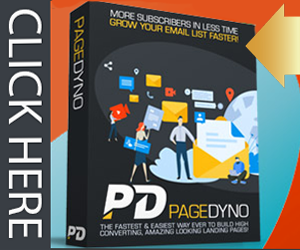Paid Media vs. Organic Reach: Striking the Right Balance for Maximum Impact

Navigating the digital marketing landscape is an intricate process, with the key to success lying in striking the right balance for maximum impact between paid media and organic reach.
Nowadays, businesses must find harmony between these two strategies to create a robust and sustainable online presence. So, let’s go over the nuances of paid media and organic reach, exploring how they complement each other.
The power of organic reach
Organic reach packs a substantial punch, particularly when you harness the potential of well-thought-out, in-house social media marketing strategies. By focusing on creating valuable content, your brand can capture the attention of a wider audience without hefty spending.
Sharing, liking, or commenting on your posts represents a growing genuine connection with your audience. When your content resonates with your target demographic, it can snowball into more significant visibility and credibility. Even better, organic reach is not just a one-time win. Over time, your content can gain traction, steadily increasing your brand’s presence, especially if you make use of smart social media marketing strategies. So, don’t underestimate the power of organic reach since it’s a cost-effective, long-term asset for your brand’s online success.
The role of paid media
The role of paid media in today’s digital landscape cannot be overlooked either. Paid advertising can be very useful for businesses that need quick and precise results. With the right strategy, paid ads can help you reach your target audience with pinpoint accuracy, making every dollar count.
This is especially crucial in the competitive online market, where visibility is often challenging. But even more intriguing is how paid social media advertising can level the playing field for small businesses. Small businesses can access tools that enable them to compete by utilizing platforms like Facebook Ads or Instagram Ads.
So, paid ads can help, especially when you take into account how paid social media advertising helps small businesses carve out their own space in the digital arena, ensuring their voices are heard amid the noise of the internet.
Striking a balance and why it matters
Striking a balance between paid media vs. organic reach is not just a buzzword in the marketing world. It’s a critical strategy that can significantly target the right people. Utilizing platforms like Google Ads and Facebook Ads allows you to fine-tune your targeting, ensuring your message reaches those most likely to convert. Budget allocation is another critical aspect of paid media tactics, as allocating resources strategically can maximize your ROI. A/B testing and continuous optimization can also refine your tactics, helping you get the most bang for your advertising buck.
Monitoring and analytics
Monitoring and analytics are the main ways to balance paid media vs. organic reach. After all, keeping a close eye on the performance of your strategies is crucial. Effective monitoring involves quickly spotting what’s working and what’s not, to allow you to make changes rapidly. Analytics tools also provide information, from website traffic and user behavior to conversion rates and customer demographics. This data will enable you to fine-tune your approach, focusing on what resonates with your audience and optimizing your efforts accordingly.
Furthermore, monitoring and analytics help you better understand your return on investment (ROI). And this ensures you’re allocating your resources where they matter most. Without these insights, you’re essentially navigating the digital landscape blindfolded. So, embrace the power of monitoring and analytics, and let data be your guiding light to marketing success.
Adapting to industry changes
In the ever-evolving digital landscape, adapting to industry changes is not a luxury but a necessity for businesses. Staying relevant and competitive means keeping a vigilant eye on shifts in consumer behavior, emerging technologies, and evolving algorithms. What worked yesterday may not work tomorrow. Adapting requires a proactive approach involving staying informed about industry trends, consumer preferences, and the latest updates from major platforms like Google and social media networks. Embracing change and being flexible in your strategies is key to properly using paid ads and organic reach. So, those who can quickly adjust quickly are the ones most likely to leverage their resources successfully.
The right combination for long-term success
With what we covered on striking the right balance for maximum impact between paid media vs. organic reach, remember that the digital landscape is a dynamic arena. Continuously adapting your strategies based on your unique goals and audience is key to long-term success. So, by harnessing the synergy between paid media and organic reach, you can create a potent mix that ensures your brand remains relevant and influential.
Picture Link: https://pixabay.com/photos/student-typing-keyboard-text-woman-849822/
Comments are closed.




